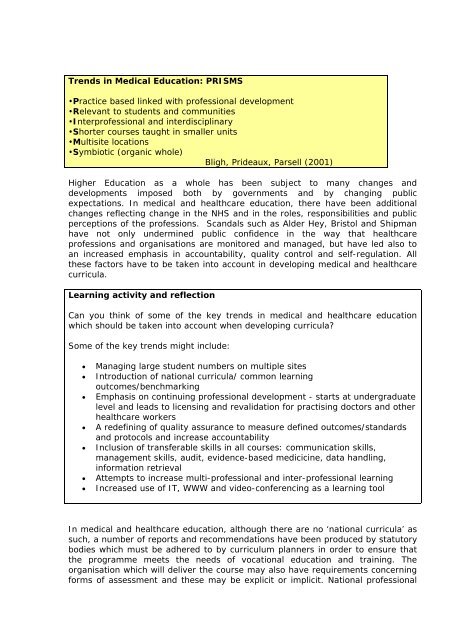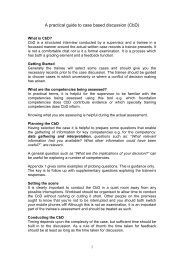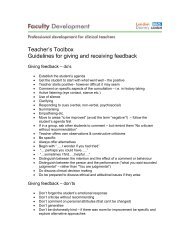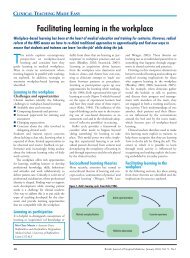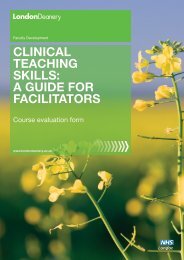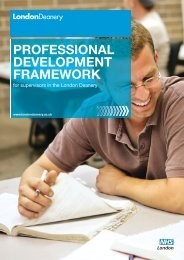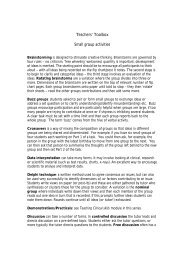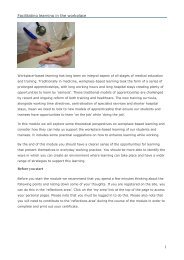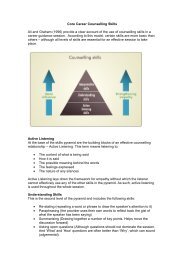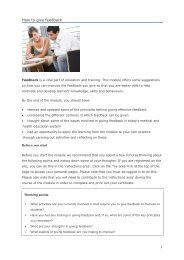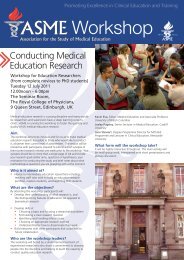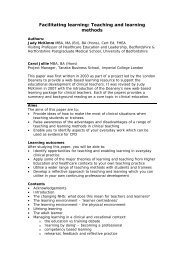Curriculum development module - Faculty Development - London ...
Curriculum development module - Faculty Development - London ...
Curriculum development module - Faculty Development - London ...
Create successful ePaper yourself
Turn your PDF publications into a flip-book with our unique Google optimized e-Paper software.
Trends in Medical Education: PRISMS<br />
•Practice based linked with professional <strong>development</strong><br />
•Relevant to students and communities<br />
•Interprofessional and interdisciplinary<br />
•Shorter courses taught in smaller units<br />
•Multisite locations<br />
•Symbiotic (organic whole)<br />
Bligh, Prideaux, Parsell (2001)<br />
Higher Education as a whole has been subject to many changes and<br />
<strong>development</strong>s imposed both by governments and by changing public<br />
expectations. In medical and healthcare education, there have been additional<br />
changes reflecting change in the NHS and in the roles, responsibilities and public<br />
perceptions of the professions. Scandals such as Alder Hey, Bristol and Shipman<br />
have not only undermined public confidence in the way that healthcare<br />
professions and organisations are monitored and managed, but have led also to<br />
an increased emphasis in accountability, quality control and self-regulation. All<br />
these factors have to be taken into account in developing medical and healthcare<br />
curricula.<br />
Learning activity and reflection<br />
Can you think of some of the key trends in medical and healthcare education<br />
which should be taken into account when developing curricula?<br />
Some of the key trends might include:<br />
• Managing large student numbers on multiple sites<br />
• Introduction of national curricula/ common learning<br />
outcomes/benchmarking<br />
• Emphasis on continuing professional <strong>development</strong> - starts at undergraduate<br />
level and leads to licensing and revalidation for practising doctors and other<br />
healthcare workers<br />
• A redefining of quality assurance to measure defined outcomes/standards<br />
and protocols and increase accountability<br />
• Inclusion of transferable skills in all courses: communication skills,<br />
management skills, audit, evidence-based medicicine, data handling,<br />
information retrieval<br />
• Attempts to increase multi-professional and inter-professional learning<br />
• Increased use of IT, WWW and video-conferencing as a learning tool<br />
In medical and healthcare education, although there are no ‘national curricula’ as<br />
such, a number of reports and recommendations have been produced by statutory<br />
bodies which must be adhered to by curriculum planners in order to ensure that<br />
the programme meets the needs of vocational education and training. The<br />
organisation which will deliver the course may also have requirements concerning<br />
forms of assessment and these may be explicit or implicit. National professional


